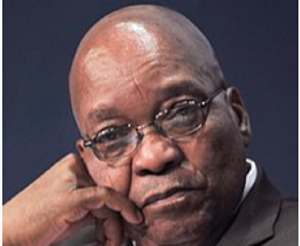Business News of Tuesday, 7 May 2024
Source: classfmonline.com
Cocoa price falls 30% over market liquidity fears
After hitting a major comparative peak last month, cocoa prices that were trading at around $12,000 on Futures commodities markets have experienced a sizable drop of around 30%, amid reported fears over a lack of liquidity in the market, writes Neill Barston.
The rapid rise in prices (in nominal terms) over the past year, which saw values triple on New York ICE and London trading platforms, had caused widespread concern within many quarters of the industry, with many in the sector fearing the rate rise would be unsustainable.
As previously covered, multiple factors had influenced the situation, including harsh weather patterns causing a two-year deficit of supplies, crop disease and heightened speculative trading from investors including hedge funds, that saw prices spiral upwards.
Notably, it had served to highlight the major gap between what was being attained within commodities markets, and what was actually being paid to farmers in Ivory Coast and Ghana, which had stood at less than $2,000 a tonne until a 50% pay increase was announced for the forthcoming crop season in both nations.
Together they provide nearly two-thirds of the global market’s cocoa, meaning they remain of key significance to the confectionery supply chain.
In light of the situation, farmer pay had been placed at the heart of the agenda of last month’s World Cocoa Conference in Brussels, with a consensus agreed that delivering a living income was of paramount importance for the sustainability of the sector.
Speaking at the event, for which Confectionery Production was the official media partner, Alex Assanvo, executive director of the CIGCI cocoa organisation for Ghana and Ivory coast noted the critical importance of resolving the issue.
He said: “Our responsibility is to stick to our ambition and the means contemplated to achieve it. We need a predictable floor price, with a dedicated mechanism to deliver it irrespective of terminal market prices. History shows that commodity markets are prone to price falls as sudden as price rises – and sadly for farmers, falls are way longer than rises. So, we need to have the toolbox before prices will go down.”
Notably, within the space of just over a week of the conference’s conclusion, cocoa prices have tumbled from that $12,000 peak to around $7,500 a tonne on the New York Futures market, dealing with advanced sales of cocoa.
This comes despite market projections of further deficits in crop supplies anticipated for a third year in a row, which had led to industry-wide forecasts of continued price rises throughout 2024.
But in a shock development which has reportedly centred on liquidity concerns within the industry, as reported by outlets including Reuters, prices have fallen steeply, placing further uncertainty around the segment, with farmers facing a continued raft of major challenges.
This has spanned key issues of unfavourable weather conditions linked to climate change, devastating incidents of crop disease, and a lack of access to fertilisers that have experienced extremely high prices within the past few years, as well as pressure from illegal ‘galamsey’ gold mining stripping land within Ghana and across the region, there have been marked reported declines in productivity.
As has been reported locally, concerns have been reported that Ivory Coast’s mid-crop harvest due this summer, is now expected to fall from 550,000 tonnes last year, to around 400-450,000 tonnes, which is also another major factor causing concern within the wider supply chain.











